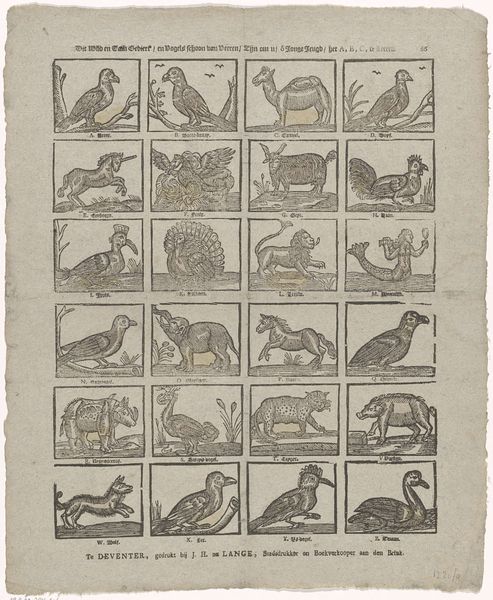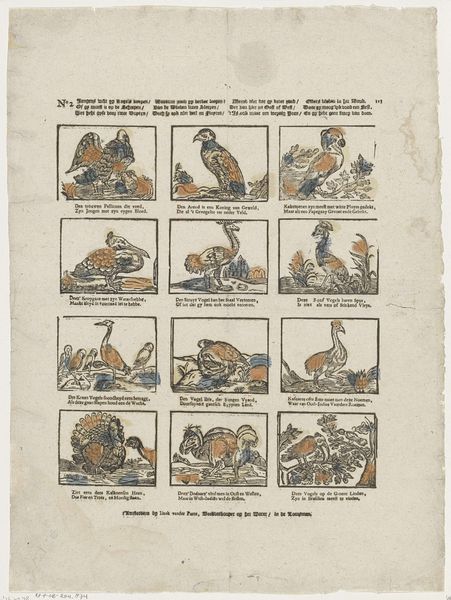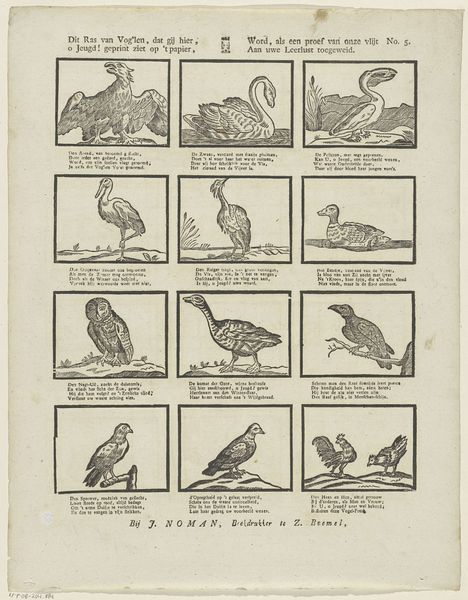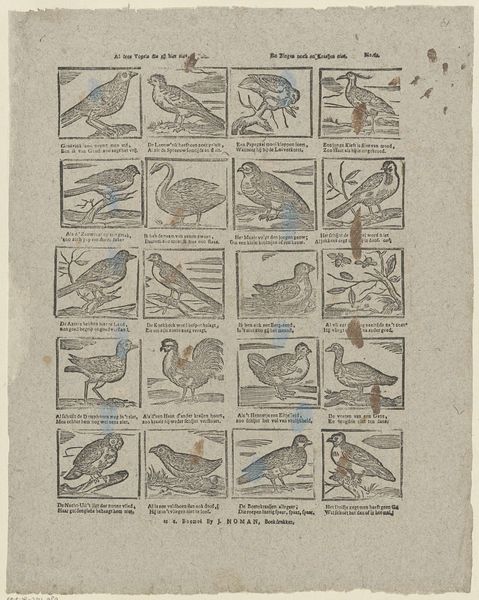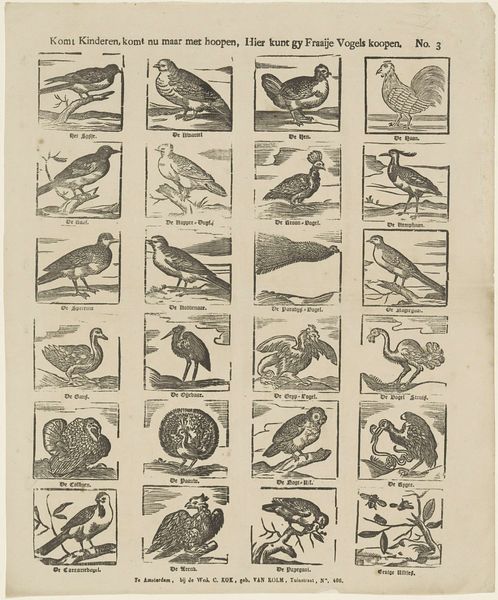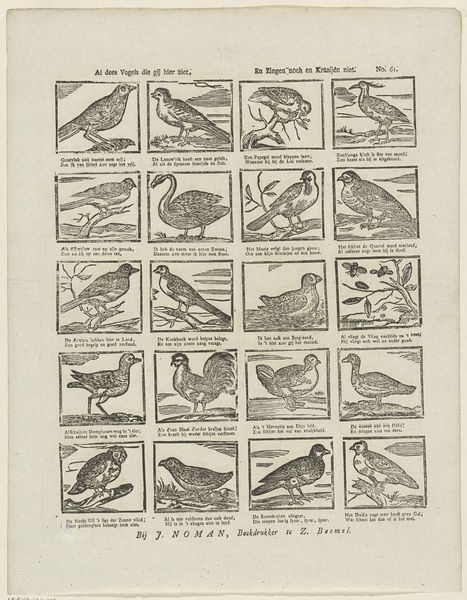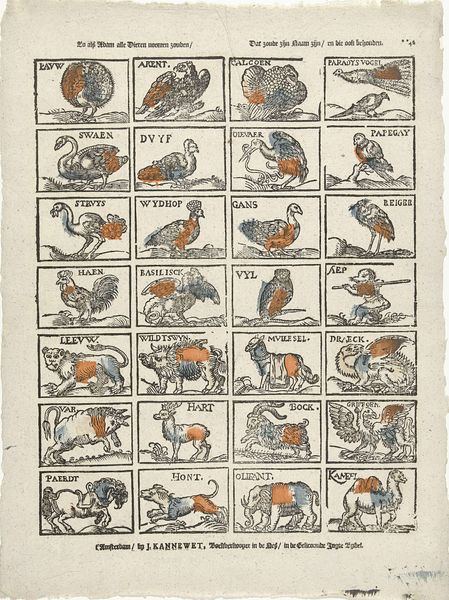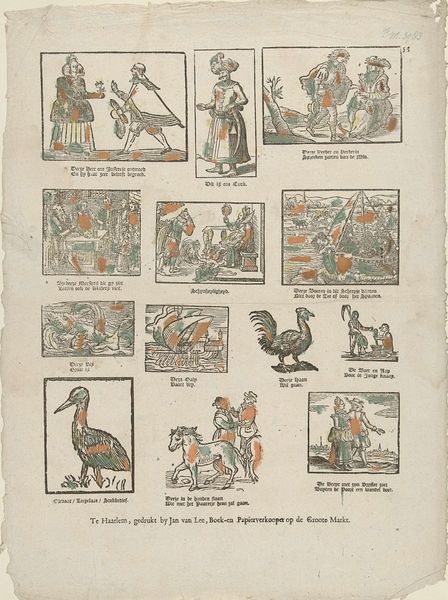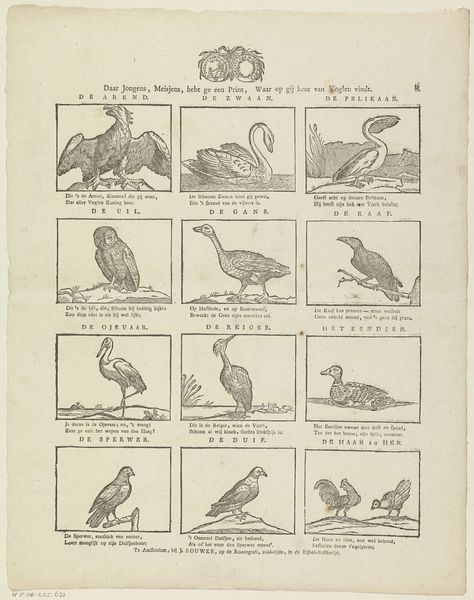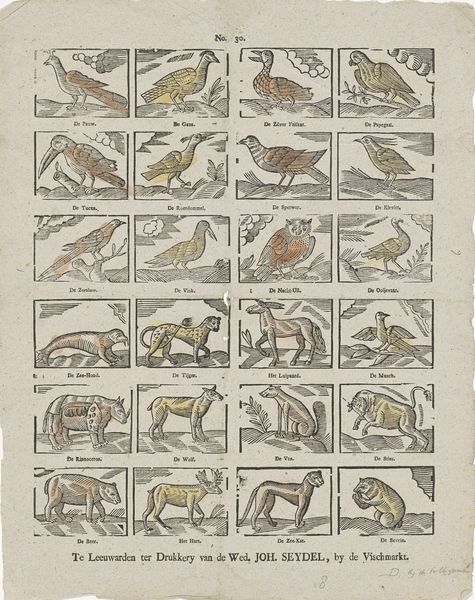
Ziet, lieve jeugd! dit pluimgediert': / Veel landen zijn door hen versierd. / Vogels zijn u welbehagen, / Deez' print wordt u opgedragen 1820 - 1838
0:00
0:00
print, engraving
#
16_19th-century
# print
#
old engraving style
#
bird
#
linocut print
#
ink colored
#
watercolour illustration
#
genre-painting
#
engraving
#
realism
Dimensions: height 395 mm, width 323 mm
Copyright: Rijks Museum: Open Domain
Curator: Here we have an engraving from somewhere between 1820 and 1838, by Christiaan Jacob Schuyling. The print is titled, "Ziet, lieve jeugd! dit pluimgediert': / Veel landen zijn door hen versierd. / Vogels zijn u welbehagen, / Deez' print wordt u opgedragen." Editor: Whoa, that’s a mouthful! I’ll just call it 'The Birds.' It has a somewhat antique feel – you know, like it was pulled straight from an old book. There's an innocent vibe to it. Sort of a child's introduction to exotic avians, perhaps. Curator: Exactly! It would seem its function was likely didactic, introducing children to birds through these somewhat simplified, yet recognizable, images. Notice the label for each bird printed above it, and that brief description just below. It is interesting how it appears like a sampler of the animal kingdom rendered in print, an attempt at organizing and disseminating knowledge about the natural world within a specific socio-economic context. Editor: I get that! Each bird, neatly framed, is like a little stage, where the narrative unfolds. Did kids back then get a sense of adventure just gazing at these exotic birds? I mean, an ostrich and a toucan on the same page... it feels like a flight of fancy to me. Curator: That's astute, recognizing the element of both real and imagined possibilities that would engage a child's sense of curiosity about geography, other cultures, zoology. It underscores the function of visual media in shaping a worldview. And how this type of imagery might reinforce ideas about nature and also the culture it inhabits. Editor: It is the selective use of color, almost like watercolor washes, that draws me in. It’s simple, yes, but so charming. Gives the prints a certain warmth and approachability, even after all these years. It feels intimate somehow. Curator: I agree, and also feel this use of color emphasizes its pedagogical function. It certainly reflects an effort to create something aesthetically pleasing as well as informative, indicating how 19th-century printmaking adapted to meet the demands of its audience. Editor: Seeing them all together, each bird in its box… it’s strangely calming, but makes you consider the bigger picture, so to speak. The relationship between humans and the natural world, perhaps. Curator: Precisely, and thinking about that original audience interacting with it allows a new insight to emerge about the relationship between humans and nature and its transformation over the intervening centuries. Editor: This feels like something to keep in mind as you explore the rest of the collection. Curator: Indeed, an exercise in imagination about who and why this image was created, its effect, and ultimately what it means today.
Comments
No comments
Be the first to comment and join the conversation on the ultimate creative platform.

